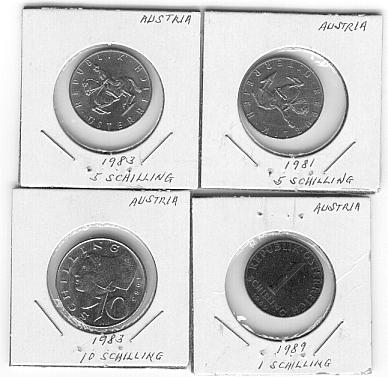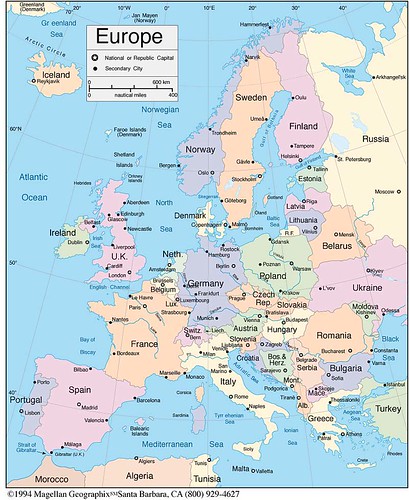
Euros:
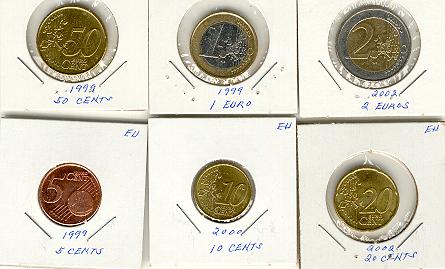
As of this writing there are 25 member states in the European Union (EU) and here is a chronology of when each became a member:
1958: Belgium, France, Germany, Italy, Luxembourg, The Netherlands
1973: Denmark, Ireland, United Kingdom
1981: Greece
1986: Portugal, Spain
1995: Austria, Finland, Sweden
2004: The Czech Republic, Cyprus, Estonia, Hungary, Latvia, Lithuania, Malta, Poland, Slovakia, Slovenia
Possible member candidates:
Croatia, Macedonia, and Turkey
Other Potential Member states:
The remaining states in the Balkans (Albania, Bosnia and Herzegovina, Montenegro and Serbia, including Kosovo)
Those who failed to join or left:
Norway, Greenland, Morocco, and Switzerland.
Other Future Prospects:
Armenia, Cape Verde, Georgia, Iceland, Moldova , and Ukraine
And include the European Microstates:
Liechtenstein, Monaco, and Vatican City
And More:
Macaronesia Region composed of Cape Verde(named above), Azores and Madeira, and Spanish Canary Islands; then, Azerbaijan, Faroe Islands, Iceland, and San Marino.
However, there are only 12 member countries using the EU currency, the euro:
Austria, Belgium, Finland, France, Germany, Greece, Ireland, Italy, Luxembourg, the Netherlands, Portugal and Spain.(Coins and notes were released only on 1 January 2002.)
But the following non-members also use the euro currency: Andorra, the Holy See, Monaco and San Marino.
A little background on currency value:
Once upon a time not so long ago in a land not so far away, the Swiss franc was the strongest currency in the world. Outside of gold, it was the premier currency in which to seek a safe haven from periodic world monetary turmoil. It still is, but with a much reduced appeal with the advent of the euro.
Germany is Switzerland's major trading partner, and consequently maintained a narrow fluctuating trading band with the German mark, also a relatively strong paper with the Weimar experience still fresh in the minds of many Germans. With the mark being amalgamated into the euro and its sovereign monetary policy now determined by the ECB, the Swiss franc's value is now reflective of the far more socialist monetary policies of the other members in the ECB. It's a sorta mini-wealth transfer within Europe. If Britain has ever done anything right for its people it is to have refrained from joining the giant wealth transfer scheme inherent in the ECB. Norway and France are a couple of others getting cold feet about this whole regional government
So now, here is the US dollar conversion of the three-named currencies, except that the Deutsche mark is now obsolete because Germany now uses the euro:
One Euro = 1.25140 US$
One Swiss Franc = 0.800839 US$
One Deutsche Mark (obsolete) = 0.639789 US$
In effect, the 12 member states, including the 4 little states mentioned above, in adopting the euro have effectively demonetized their own unique currencies and made them obsolete. And thus put them squarely on the lap of the eager numismatists. These frozen-in-time gems will now command a lot of interest and value to those eager to memorialize them.
Given these developments, I was then quite exhilarated when I came in possession of a collection that was recently discarded by a homeowner who had to sell his house and move elsewhere. Heartened by receipt of a box-full, bigger than your typical shoebox, of coins from all over the world, but dominated by those coming from member states of the EU.
Here are some of the obsolete coins which have been replaced by the euro. The latter (pictured above) might disappoint coin enthusiasts, given the rather unimpressive quality and look of the coins and the metals used. Especially when compared with the older discarded coins of the member states.
Germany:
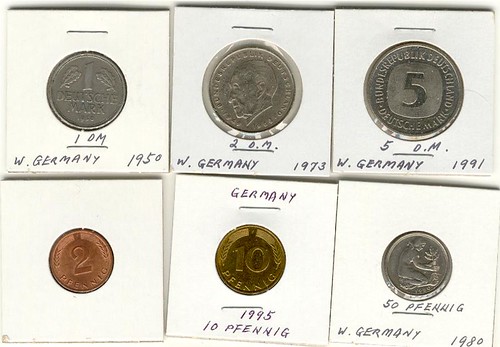
Netherlands:
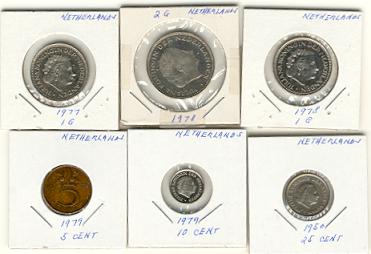
Italy:
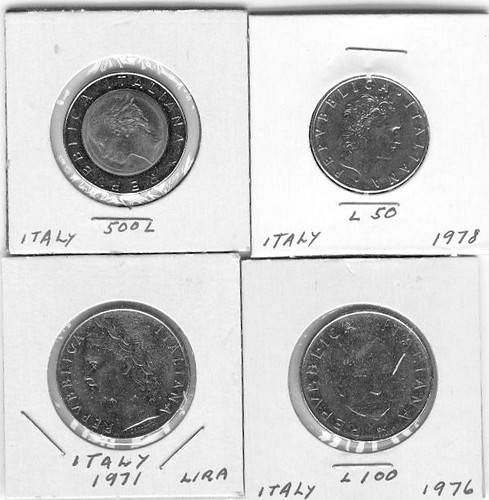
France:
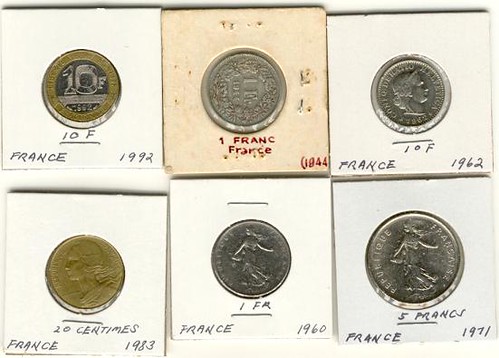
Ireland:
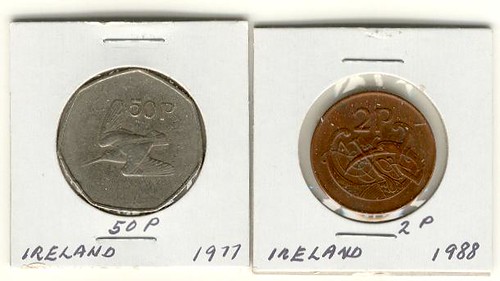
Austria:
